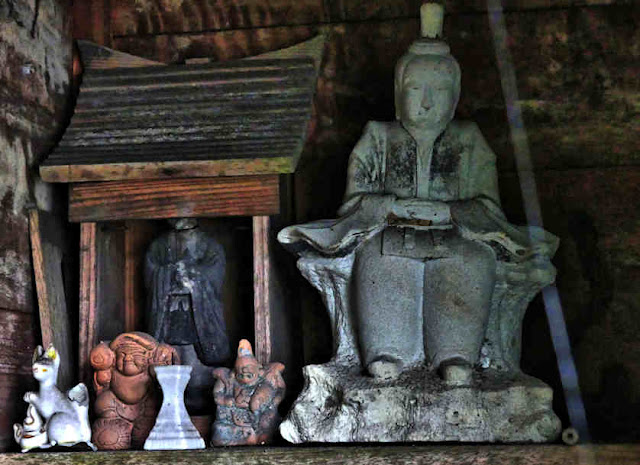After visiting the
huge stump of what used to be a sacred tree I carried on upstream on the south/east bank of the Gonokawa River.
So far, on the third day of my walk upriver, more people seem to live on the opposite bank.... something I believe holds true at least as far as Miyoshi.
At some point I cross the border from Kawamoto Town into Misato City, not really a city but a collection of villages and small towns collected together administratively...
Misato has a total of 14 bridges, both rail and road, that cross the Gonokawa. That number may now be reduced as the rail bridges get dismantled since the line closure...
The first of these bridges ( or the last if you are coming downstream) is the Minato Bridge.
As with everywhere in Japan, small Buddhist altars can be found by the roadside.
Then it was Take Station, the next station on the former Sanko Line. Not dismantled and demolished like some on the line....
In England it would be called a Halt rather than a station as there were no buildings and never had any staff.
Of course Take means bamboo....
Up ahead, Mount Sanbe, the active volcano that is 1,126 meters high, and the highest point in Iwami. The river heads towards it for a bit more, todays destination, and then does a 180 turn and heads away from it.
There is not much else to see until the next settlement, Onbara.
It is kind of divided by a hill into two parts....
I chose to walk through the village rather than stay on the riverbank...
The last set of photos are just shots of things that attracted my eye before reaching the village shrine.
if you would like to subscribe by email just leave your email address in the comments below. It will not be published and made public. I post new content almost everyday, and send out an email about twice a month with short descriptions and links to the last ten posts.
































































